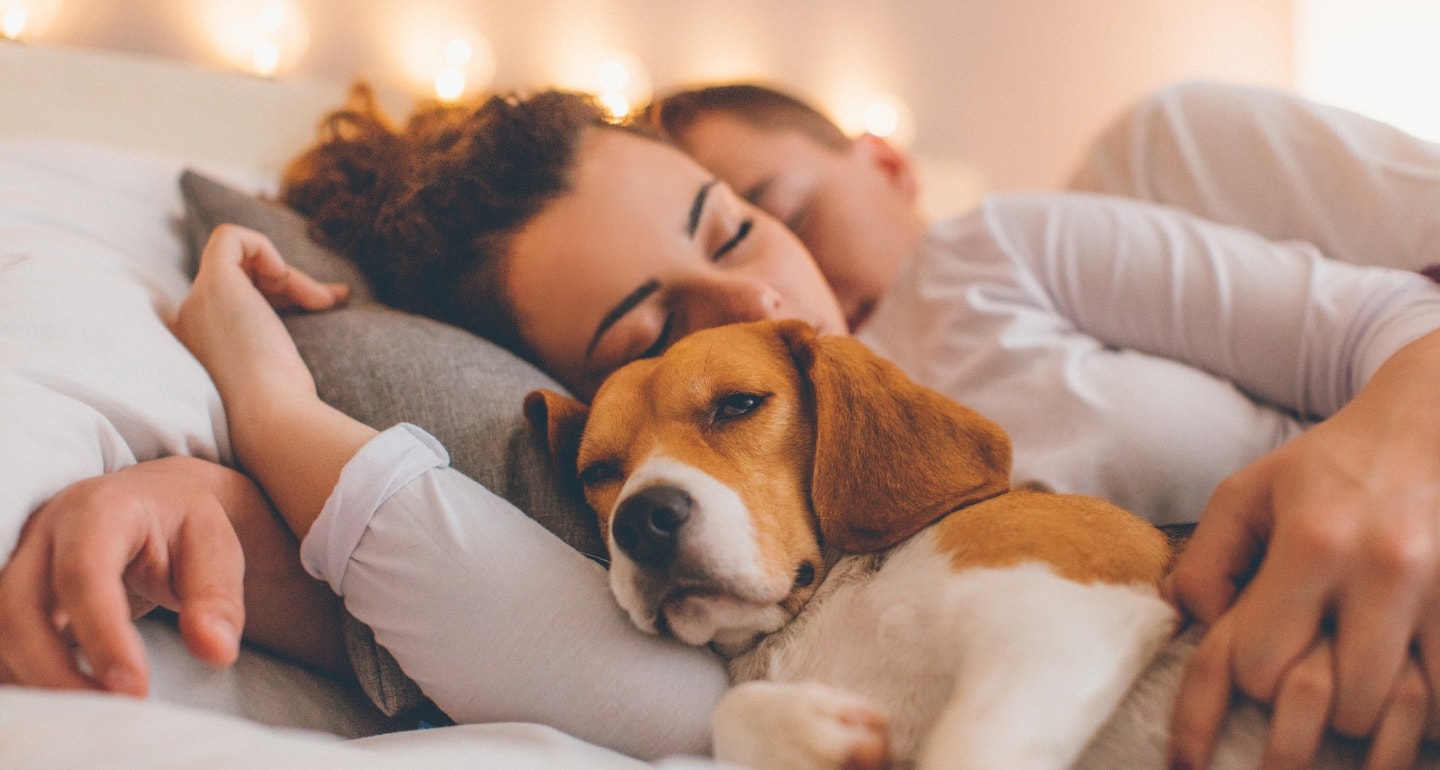You’ve taken the plunge and you’re bringing a new dog home. While welcoming a new pup into your home is exciting, it also can be a little daunting at first—especially for first-time dog owners.
Any time you are bringing a new dog home, whether a puppy or an adult dog, it’s best to prepare ahead of time and get an idea of what to expect.
Here are 10 things first-time dog owners, or existing dog owners getting a second dog, can do to make the transition easier.

iStock.com/cmannphoto
1
Make sure you have the right dog food.
Your pup will need dog food right away. Find out what your new dog has been eating and decide if you want to continue that food or start transitioning them to a new food.
Check with your veterinarian to confirm that the food you use meets your dog’s individual nutritional needs. Different ages or stages can benefit from specific nutrients to help your animal thrive.
Read our guide to feeding dog food at different life stages.

iStock.com/gollykim
2
Prepare a place for your dog to sleep.
Set up a sleeping spot in advance. It’s generally best to start your dog with a confined space like a dog crate. This gives them a safe space of their own. Prepare it ahead of time, and add a cozy dog bed for them to rest on.

iStock.com/Renphoto
3
Assume your dog is not housetrained.
When bringing a new dog home, it’s likely they don’t understand that your home is a “no-potty” zone. Instead of giving them lots of space to have accidents, assume your dog is not house-trained and confine them in a dog crate, an exercise pen (aka ex-pen) or a small gated area when you are not around to supervise.
While you’re home, take your dog out of the confined space frequently, and give dog treats each time they go potty outside. If you are away from home for hours in a row, set up dog potty pads in the confinement area, so your dog has a “legal” place to go while you’re gone.

iStock.com/lovro77
4
Limit how much of your home the dog can access at first.
“Accidents” in the house aren’t the only concern. Your new dog might like to chew on things, steal socks or rip up papers.
The best way to prevent damage to your things is to assume your dog doesn’t know which items are their toys and which are yours (so to speak). Gates, ex-pens and dog crates come in very handy here, too.

iStock.com/Alex Potemkin
5
Give your dog his own "room."
Living in a new place can be overwhelming. Dogs need a place to relax and decompress. You can use the confinement area for this.
If your dog decides on their own to go into the confinement area while you are home, leave them alone. If you want to interact with them, call them and see if they will leave their safe space to come to you. If not, they probably need a break.

iStock.com/Page Light Studios
6
Come up with a routine, and stick with it.
Change can be unsettling. To help your dog adjust, come up with a daily routine for your pup.
For example, you could start the day with a walk and breakfast, then time in the confinement space until a dog walker comes, then confinement with a dog treat toy or chewie until you come home, another walk, dinner and time hanging out in the living room. It doesn’t matter exactly what the routine looks like, but the more regular the routine, the faster your dog will settle in.

iStock.com/eclipse_images
7
Create a calming environment.
Like excitement, calm can be contagious. If you keep your cool, even when unsettling or annoying things happen, that will help your dog stay calm as well. Your dog also may benefit from calming pheromones, like an Adaptil electric diffuser, during this transition.

iStock.com/PavelRodImov
8
Remember: Patience is a virtue.
You and your pupper are new to each other. It will take time to adjust. Give your new dog the benefit of the doubt—they're almost certainly not trying to annoy you.
Think of ways to set them up for success. Do you need a dog gate to keep them out of a certain area? Do you need a dog walker to visit while you’re out? Are you accidentally encouraging the wrong behavior?
Exercise patience. In most cases, things will get better once your dog settles in.

iStock.com/andriano_cz
9
What if my dog won't eat?
Some dogs stop eating in a new environment. For many animals, familiar food helps; for others, variety is the spice of life. Talk to your veterinarian about rotating foods, changing them about once a month and adding dog food toppers.
Establish set meal times, and pick up the food after about 30 minutes. This helps increase the dog’s sense of urgency about eating. You also can try feeding your pup from a food puzzle toy instead of a dog bowl—this works surprisingly well in many cases.
Another option is to use a food topper to make your dog’s meals more enticing. Make sure to add the food topper before you put the food down for your dog. If you wait until your dog refuses the food and then add the food topper, your dog may learn to hold out for tastier and tastier additions to the food before finally eating.
JustFoodForDogs has a food topper dogs enjoy. It's crafted with human-grade ingredients and meets AAFCO dog food nutrition guidelines; so, it’s good for your dog, too!

iStock.com/Cunaplus_M.Faba
10
What if there's a major problem?
Many behavior issues—including housetraining issues—can be easier to deal with if you hire an expert. Don’t wait until things get really bad; early intervention always helps. As soon as you start to be concerned about a behavior, reach out to a certified professional dog trainer or a certified dog behavior consultant.
Share:









